

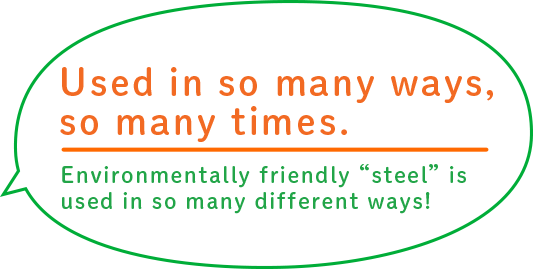
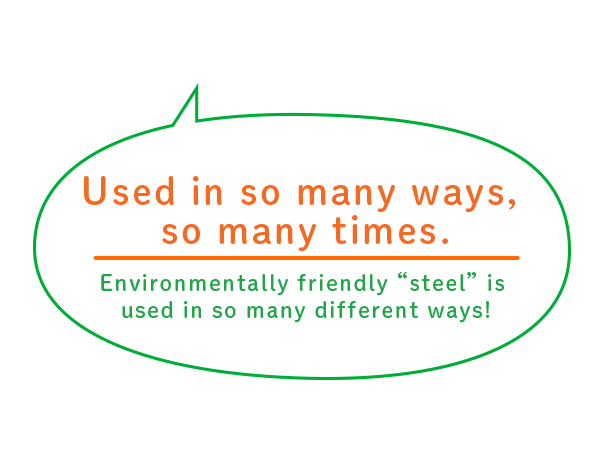

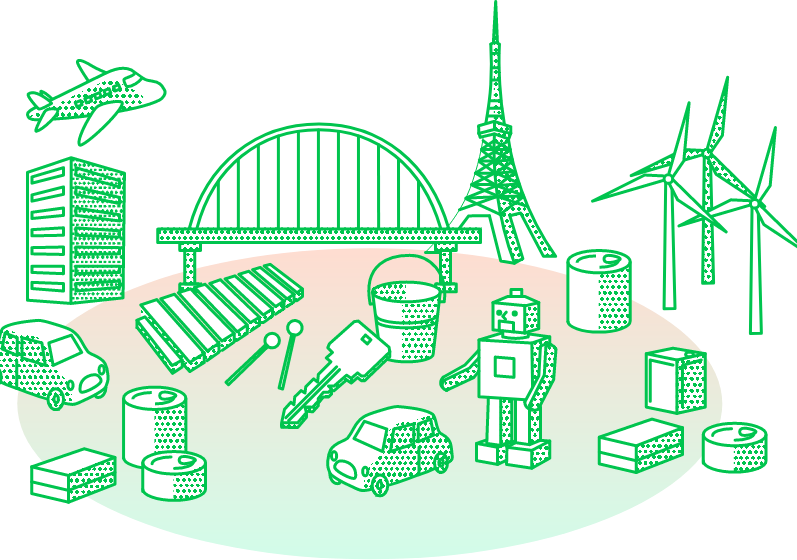
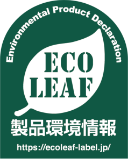
Nippon Steel’s material used as steel containers for drinks, foodstuff, paint, pharmaceutical and other packaging are certified with the “Eco-leaf” environmental label, which visualizes just how eco-friendly steel containers are.
(Eco-leaf certified product: recycling process for container materials and empty containers)
“Steel cans” have been used for a long time
throughout our day-to-day lives.
They are actually very environmentally friendly containers!
Why are “steel cans” environmentally friendly?

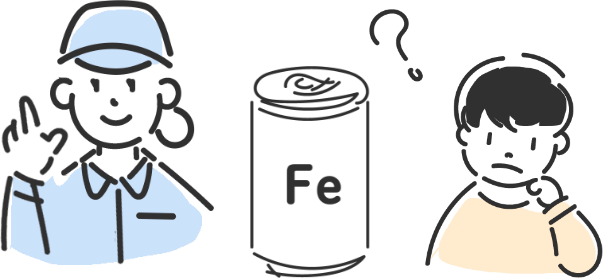
The reason is that steel cans
are made from “steel” !
The reason is that steel cans are made from “steel” that is great for the environment in many ways. “Steel” has many advantages: it is very easy to recycle; content of containers can be stored for a long period of time; it is used for safety and security; and it can be made into amazing designs.
See how steel cans(= steel)
is great for the environment!
 Earth – the Iron Planet
Earth – the Iron Planet
Iron is one of the most plentiful resources on the planet, and helps build society
“Iron” makes up one third of the weight of Earth, and it exists in abundance in the natural world. “Iron” is a practically unlimited resource, and 90% or more of all metallic products used in so many areas of our day-to-day lives are made of “steel.”

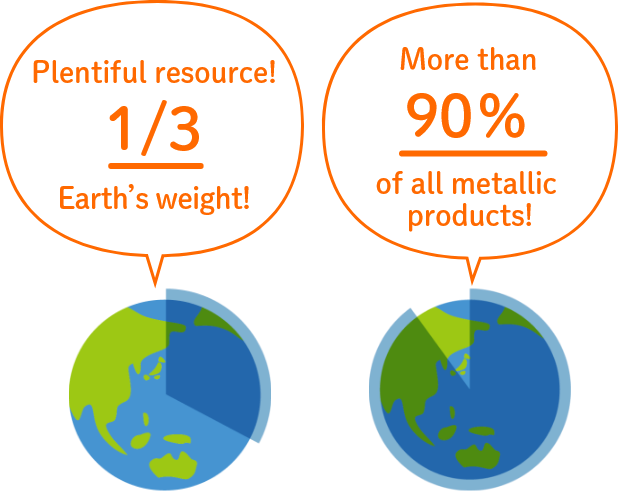
Steel is energy efficient
Iron is available in abundance as a resource, it is very easy to recycle and can be made into steel products with a small amount of energy.
Price by weight is even cheaper than water in a plastic bottle.
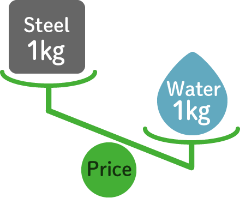
 Re-made into Anything, Any Number of Times!
Re-made into Anything, Any Number of Times!
Building a
Sustainable Society
If we continue using resources non-stop, there will come a day when those resources will run out. Many materials other than “steel” are end of life materials, and discarding products made of such materials will result in endless piles of rubbish everywhere. Recycling allows the planet’s resources to be used more efficiently and is also environmentally friendly.
The phrase SDGs appears regularly these days, and means Sustainable Development Goals.
These 17 goals have been designed as global objectives to achieve in the future, and a broad range of initiatives are now being developed in countries around the world.
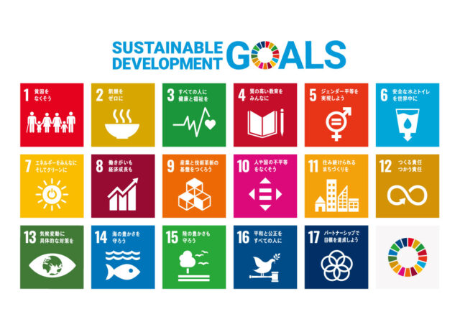
The challenges raised in Goal 13 Climate action and Goal 14 Life below water of the SDGs in particular mean everyone should think carefully about “What actions are really environmentally friendly?”
With problems related to carbon dioxide (CO2) that is a major cause of global warming, to sea pollution caused by microplastics that flow into oceans and remain there, the importance of recycling is now higher than ever!
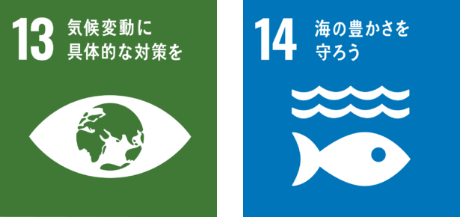
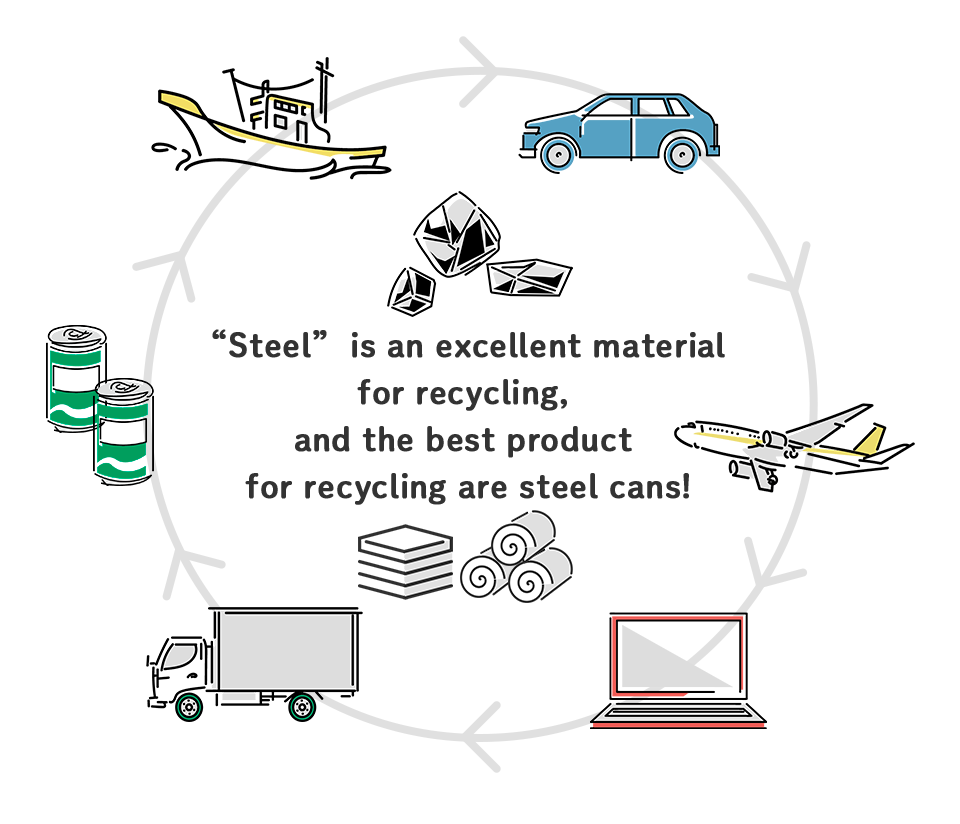

“Steel” is an excellent material for recycling. Steel cans and other steel products that have been used and discarded can be restored to pure “steel,” and re-made any number of times into a wide range of products.
Steel cans also have a very high recycling rate, even when compared to other materials used for containers.
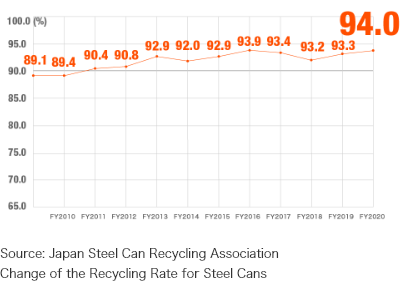
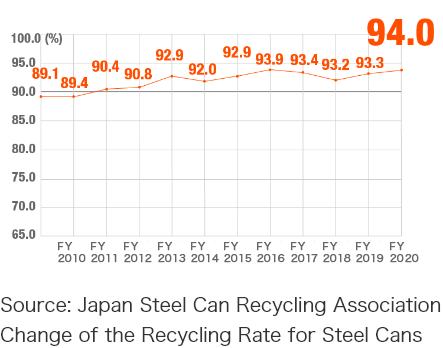
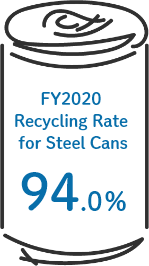

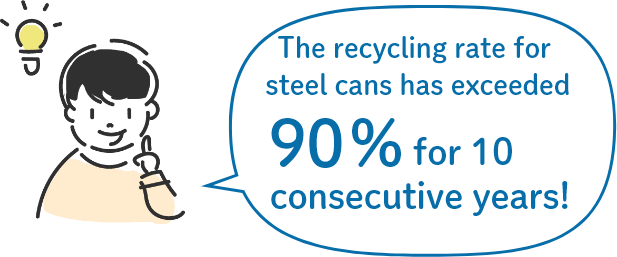
 Environmentally friendly throughout a product’s life cycle!
Environmentally friendly throughout a product’s life cycle!
Life Cycle Thinking
When thinking about “What actions are really environmentally friendly,” it is vital to consider the entire life cycle of products—from when they are “produced” until they reach the “end of their useful life.”



This means that even if there is only a low amount of carbon dioxide (CO2) emissions while a certain product is used, if there are high levels of CO2 emissions when it is “produced” and at the “end of its useful life,” the product is said to have a high amount of CO2 emissions during its entire life cycle. Such products cannot be viewed as “really environmentally friendly.”
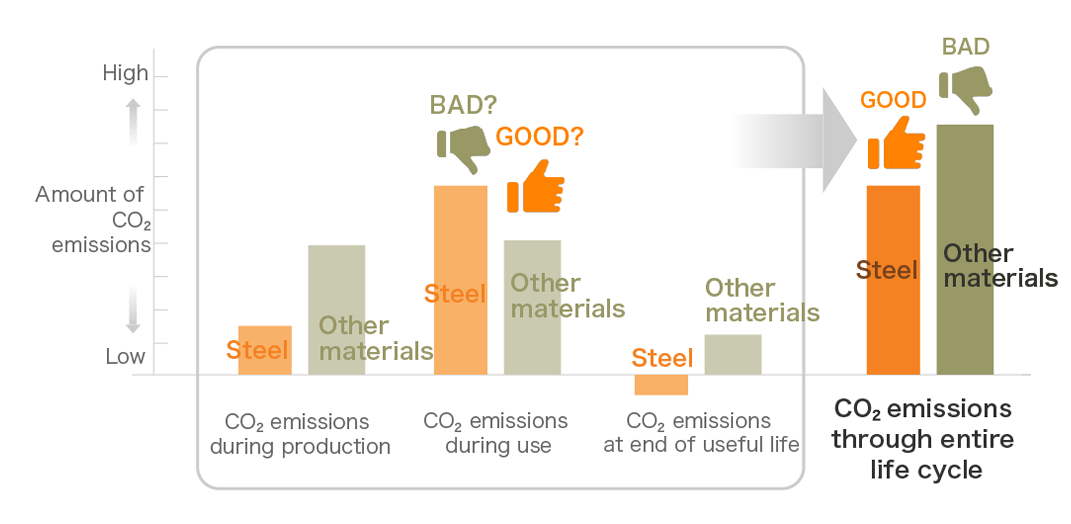
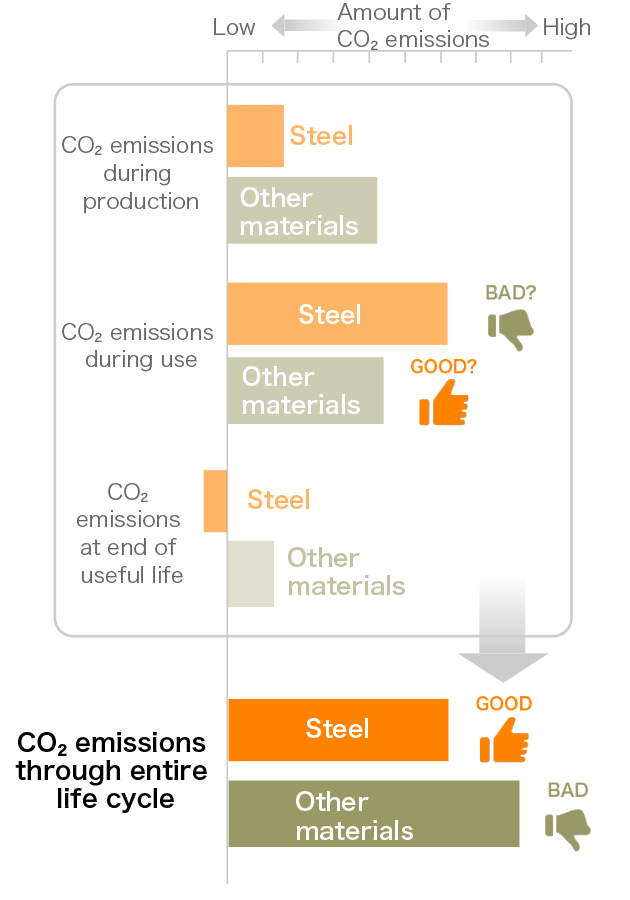
Production of aluminum needs vast amounts of electricity, which is generated by thermal power plants in many cases around the world—countless plastic containers are incinerated at these power plants, releasing large amounts of carbon dioxide (CO2) that cause global warming.
Visualization with the “Eco-leaf” environmental label
The “Eco-leaf Environmental Label Program” was developed to help people discover the impact that products have on the environment, such as the carbon dioxide (CO2) emissions through the product life cycle.
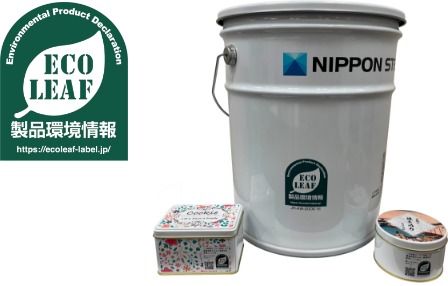
 Steel cans also make
Steel cans also make
great eco-friendly containers
Helps cut down food wastage; Reusable means eco action!
“Steel cans” help keep food safe and secure
Steel cans are a very common item around us—some contain drinks while others are used as containers for fruit, fish, meat and other foodstuff.
Compared to other materials like glass and plastics, steel cans have a very long storage life and are extremely durable, meaning they can keep foodstuff safe for long periods of time.

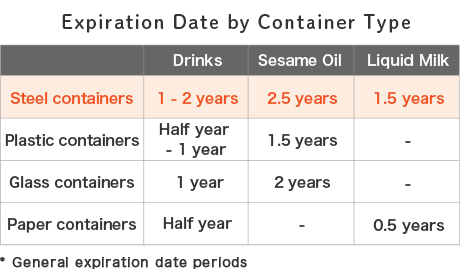
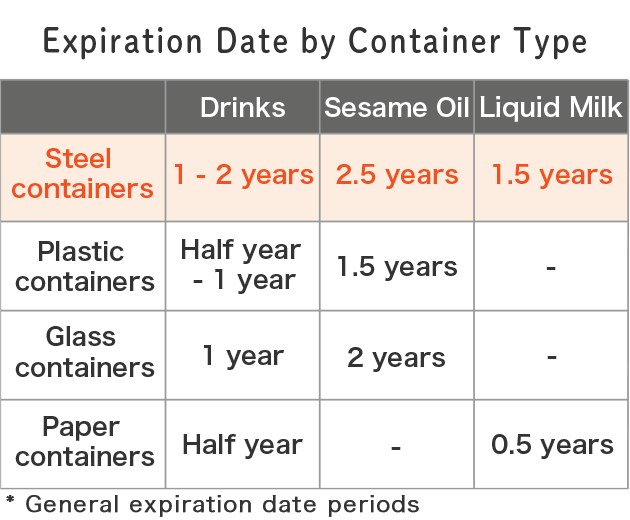
Stylish designs and exciting ways to repurpose as one-of-a-kind cans
“Steel (sheet metal)” material used for steel cans may appear tough, but are actually easy to work with and can be formed to create some stylish designs.
These designs can feature the heavy-looking texture that steel creates, and there is an increasing number of people repurposing containers for exciting new uses.
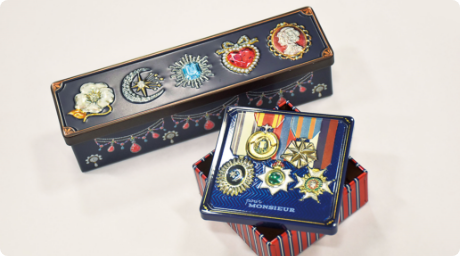

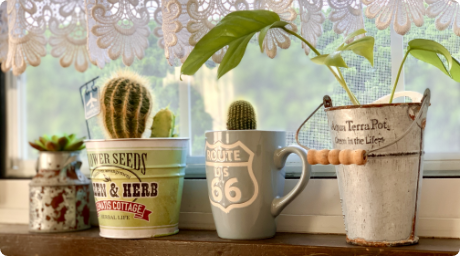


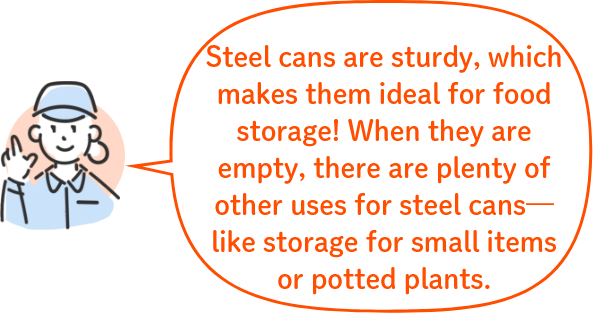
Building a sustainable society
CO2 is not the only severe environmental challenge!
Microplastics have become the cause of major environment problems in recent years. Plastics are used in vast quantities around the world because they are sturdy, easy to work with and convenient. Yet some of these plastics flow into the oceans, where they remain almost indefinitely as they do not readily decompose. There is growing movement today to regulate the use of plastics around the world, as can be seen with Goal 14 Life below water of the SDGs.
In addition to the challenges posed by global warming (CO2 emissions) that is gaining attention around the world today, there are many environmental problems including oceans polluted by plastic waste, and large quantities of expired food being discarded.
Each and every small step we take now is vital for creating a world that is more environmentally friendly in 10 years, 20 years and even further into the future.
Using these environmentally friendly “steel cans” in our day-to-day lives as containers for foods, drinks and other items is surely one way we can all take part in eco action.


Source sites and related links
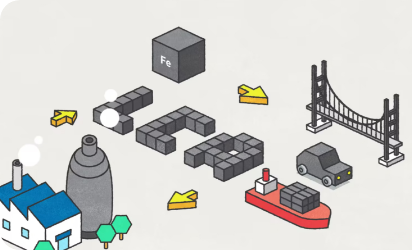
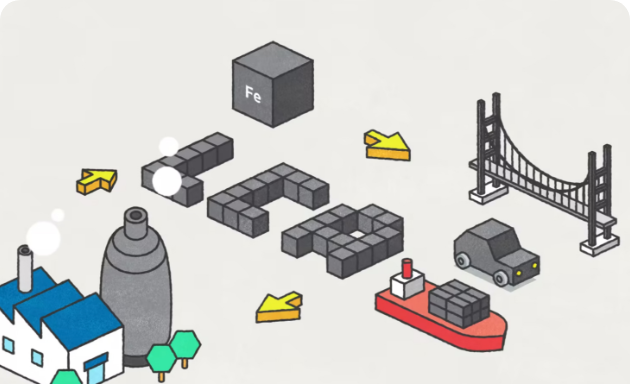

“Steel—Part of People and the Planet” Video
Video explaining how “steel” is environmentally friendly when viewed through its entire life cycle.

